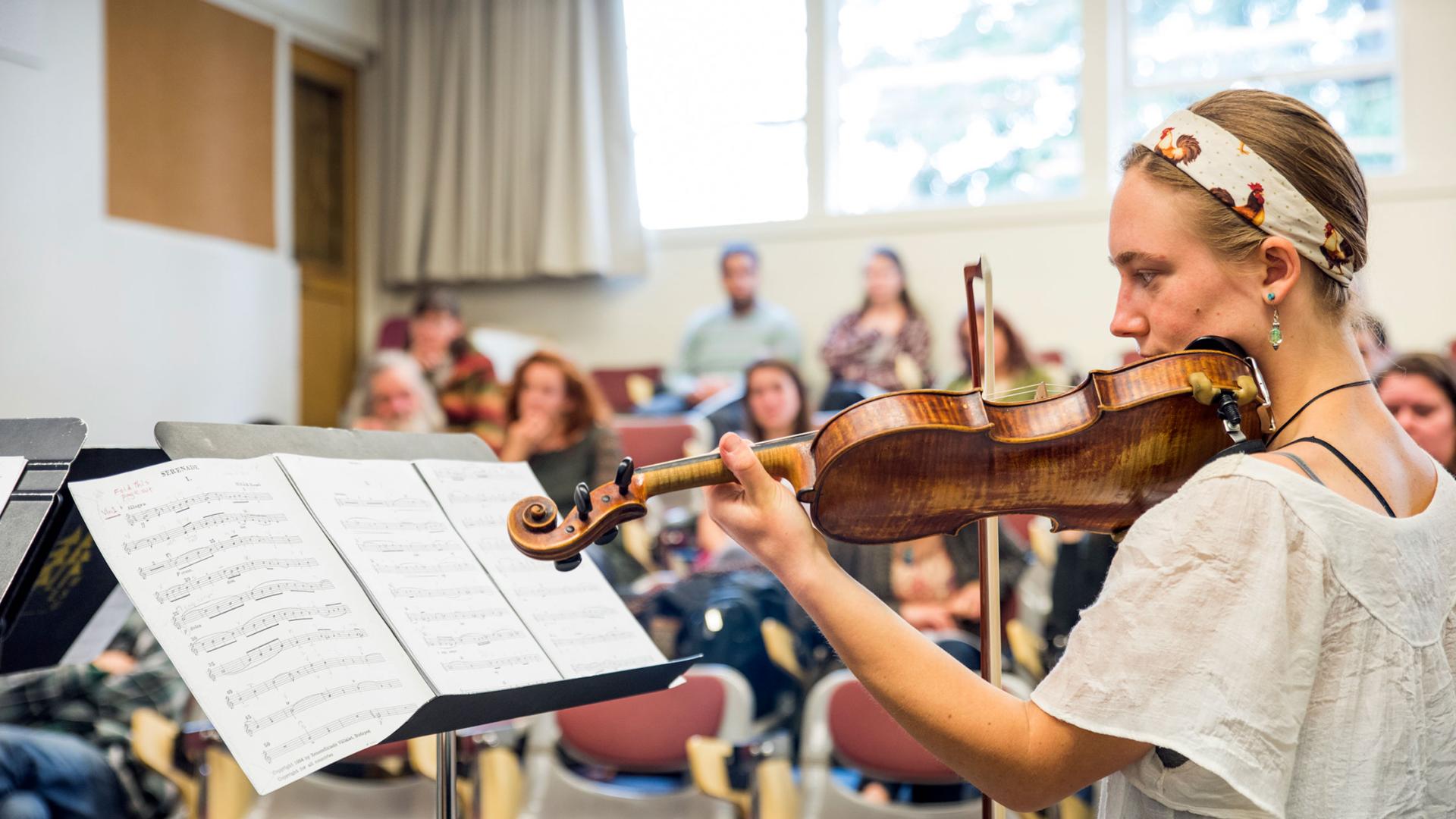Breadcrumb
Understanding the Annual Security & Fire Reports
This page provides an overview of how to read and understand the Annual Security Report and Annual Fire Safety Report, along with how we define certain terms used within the report.
- ASR: annual security report
- AFSR: annual fire safety report
- CHTR: campus hazing transparency report
- SCHA: stop campus hazing act
- DFSCA: drug-free schools and communities act
- Clery Act: Jeanne Clery Campus Safety Act
The Jeanne Clery Act (enacted as federal law in 1990) is considered a consumer protection law that focuses on transparency around campus crime policy and statistics. Every fall, campuses across the United States publish the Annual Security Report ("ASR"), and if they have on-campus housing for students, the Annual Fire Safety Report (AFSR). Here, we combine them into one report, which can be viewed here.
It is named for the year it is published; however, it contains statistics from the previous three calendar years: 2021, 2022, and 2023. Statistics are collected for a calendar year, rather than an academic year.
The ASR also contains the University's:
- current security and safety-related policy statements,
- emergency preparedness and evacuation information,
- crime prevention and sexual assault prevention information, and
- information about drug and alcohol prevention programming.
Clery Act disclosures are based on good-faith reports made to Campus Security Authorities (CSAs) or local law enforcement, provided the incident meets Clery definitions and falls within geographic reporting areas. These reports may differ significantly from crimes that have been investigated, substantiated, or prosecuted through formal legal proceedings. Reported statistics may therefore include incidents where limited or no corroborating evidence exists, conflicting accounts remain unresolved, formal investigations were not conducted or completed, or no disciplinary or legal action was taken. These statistics should be understood as reflecting the volume of reported concerns rather than confirmed criminal activity. If an investigation by Law Enforcement turns up that the crime did not take place as reported, the statistic remains in the ASR unless UPD has determined that the report was purposely false or baseless. This is referred to as being unfounded; the ASR also contains the number of unfounded reports.
What is considered a report:
- Emails
- written notes
- in-person conversations
- submitted reports directly to Title IX/DHR, DOS, CARE, Housing, etc.
- voicemails or phone calls
A crime is considered unfounded for Clery Act purposes only if sworn law enforcement personnel (UPD) make a formal determination that the report is false or baseless. No other campus office or entity is able to unfound Clery-reportable crime statistics. Crime reports can be properly determined to be false only if the evidence from a complete and thorough investigation establishes that the crime reported was not, in fact, completed or attempted in any manner.
Crime reports can be determined to be baseless only if the allegations reported did not meet the elements of the offense or were improperly classified as crimes in the first place.
A reported crime cannot be designated unfounded if no investigation was conducted or the investigation was not completed; nor can a crime report be designated unfounded merely because the investigation failed to prove that the crime occurred.
- The initial report or statement is received and reviewed by UPD, Title IX & DHR Prevention Office, Housing & Residence Life, Dean of Students, etc.
- The report is assessed by the Clery Director and/or UPD to determine if there is an ongoing threat to the campus
- If yes, we issue a Timely Warning to campus
- UPD puts the crime statistic on the Daily Crime Log
- All crimes are totaled for the calendar year and included in the Annual Security Report
If a report references sexual assault, dating or domestic violence, or stalking, AND the survivor's name is included in the report, the Title IX & DHR Prevention Office will reach out to the survivor and share confidential support options such as the Campus Advocate Team, additional campus and community resources, and their rights and options under the CSU Nondiscrimination Policy, including the option to request supportive measures. Visit the Title IX & DHR Prevention Office website to learn more: https://www.humboldt.edu/title-ix.
Crime statistics are included based on the year they were reported, not the year they were listed. For example - a robbery happened in 2021, and gets reported in 2022. It will show up in the 2022 calendar year statistics.
When a report comes in, it gets assessed for the following information to determine if it should be included in the ASR:
- Is it considered one of the Clery-reportable crimes?
- Did it occur on Clery geography?
- Was it reported to a Campus Security Authority?
If the answer to all three of those questions is "yes", it will get counted in the current calendar year's statistics, and published in the next ASR. For example, a robbery gets reported in 2022. It will show up in the 2022 calendar year statistics, and will be published in the 2023 ASR, along with the 2024 and 2025 ASRs.
Clery-reportable crimes fall into four main categories. Definitions of these crimes can be found here.
Criminal Offenses
- Criminal homicide: murder and non-negligent manslaughter, manslaughter by negligence
- Rape
- Robbery
- Aggravated assault
- Burglary
- Motor vehicle theft
- Arson
- Fondling
- Incest
- Statutory Rape
Violence Against Women Act (VAWA)
- Domestic violence
- Dating violence
- Stalking
Hate Crimes
- Anything in the Criminal Offenses category
- Larceny-theft
- Simple assault
- Intimidation
- Destruction/damage/vandalism of property
Arrests and Referrals for Disciplinary Action
- Weapons law violations
- Drug abuse violations
- Liquor law violations
New in 2025 - Hazing
Assuming the following (fictional) scenarios are reported to UPD or another CSA, they MAY be counted in the year they were reported:
- Someone's car is stolen from a campus parking lot
- motor vehicle theft
- Someone is smoking marijuana in the University Quad
- drug referral or arrest
- Someone's residence hall room is broken into
- burglary
- Someone reports they couldn't be a part of their residence hall's floor dinners unless they drank so much alcohol they passed out
- hazing
There are four geography categories in the ASR:
- On-Campus Residence Hall (places like the Canyon, College Creek, and the Hill), specifically:
- buildings physically on the Main Campus that students live in
- Main Campus (places like academic buildings and lawns)
- Noncampus (like HBAC, the R/V Coral Sea or North Wind), specifically:
- places Cal Poly Humboldt owns or controls that aren’t part of the Main Campus,
- places students frequently use,
- and places that support our educational mission
- Public property (for example parts of LK Wood Blvd), specifically:
- sidewalks and streets, and parts of the Arcata Community Forest that are immediately adjacent to our main campus and residence halls
Some other geography designations that may not be immediately apparent to the community include:
- Telonicher Marine Lab (located in Trinidad, CA) is classified as a separate campus based on the course offerings and administrators on site.
- The Comfort Inn was considered a noncampus property during the years it was in use based on the distance it was from campus.
- Additionally, because it is not counted as an on-campus residence hall, it is not included in the Annual Fire Safety Report (AFSR).
- The Campus Center for Appropriate Technology (CCAT), also referred to as Buck House, is counted in the on-campus residence hall category because it houses only students and is located on our main campus.
- Additionally, because of this category classification, it is included in the AFSR.
"Referred for disciplinary action" is when an employee, student, or student employee is referred to certain campus offices for a campus policy violation that is also considered Clery reportable, specifically only for liquor, weapons, or drugs law violations, as defined by California state law.
Some of the offices that address these types of situations include:
- Office of Student Rights & Responsibilities, within the Dean of Students Office
- Title IX & DHR Prevention Office
- Housing & Residence Life
- Human Resources
- Academic Personnel Services
When talking about how prevalent sexualized violence is on our campus, it is important to remember that there are several different groups have different reporting requirements, report parameters, such as locations of where the harm occurred, and use different definitions of what may count as sexual assault, dating or domestic violence, and stalking. In addition to the ASR statistics, the following reports cover rates of sexualized violence:
- The Title IX & DHR Prevention Office publishes an annual report every October for the previous academic year's concerns, reports, and investigations. The report, along with associated definitions and report parameters, can be found on here.
- The Campus Advocate Team provides annual report data to the Title IX & DHR Prevention Office, as an appendix to their annual report. The Campus Advocate Team case statistics vary from the Title IX & DHR Prevention Office as some survivors only report to one organization, or a survivor may report to both organizations but the organizations are not aware since identities are not shared between the organizations unless the survivor is requesting it.
- The Sexual Assault Prevention Committee publishes the Safer Campus Survey every few years - 2012, 2020, and 2024 (coming soon). Please note: these reports contain explicit descriptions of violence. These reports can be found here.





